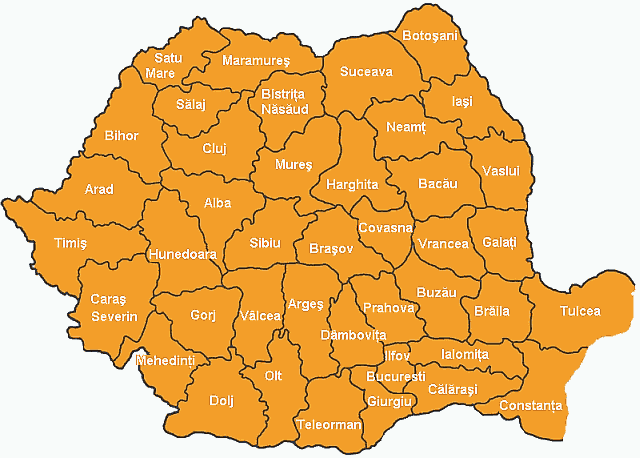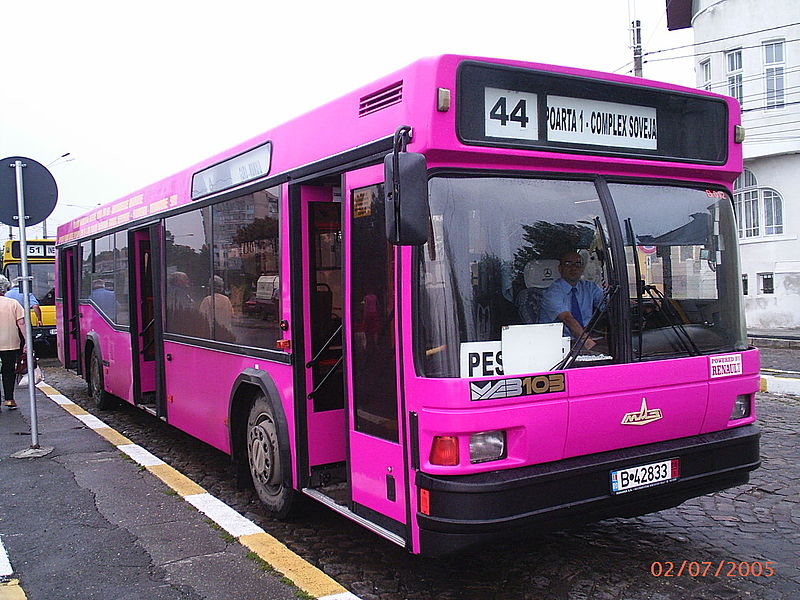At 238,400 square kilometers (92,000 sq mi), Romania is the ninth largest country of the European Union by area, and has the seventh largest population of the European Union with 21.9 million people. Its capital and largest city is Bucharest, the sixth largest city in the EU with about two million people.
The Kingdom of Romania emerged when the principalities of Moldavia and Wallachia were united under Prince Alexander Ioan Cuza in 1859. Independence from the Ottoman Empire was declared on May 9, 1877, and was internationally recognized the following year. At the end of World War I, Transylvania, Bukovina and Bessarabia united with the Kingdom of Romania. Greater Romania emerged into an era of progression and prosperity that would continue until World War II. By the end of the War, many north-eastern areas of Romania's territories were occupied by the Soviet Union, and Romania forcibly became a socialist republic and a member of the Warsaw Pact.
With the fall of the Iron Curtain and the 1989 Revolution, Romania began its transition towards democracy and a capitalist market economy. After a decade of post-revolution economic problems, extensive reforms fostered economic recovery making Romania now an upper middle-income country with high human development.
Romania joined NATO on March 29, 2004, the European Union on January 1, 2007 and is also a member of the Latin Union, of the Francophonie, of the OSCE, of the WTO, of the BSEC and of the United Nations. Today, Romania is a unitary semi-presidential republic, in which the executive branch consists of the President and the Government.
The name of Romania, România, comes from român (previously rumân), "Romanian", which in turn is a derivative of the Latin romanus, meaning "citizen of Rome". The fact that Romanians call themselves a derivative of romanus is first mentioned in the 16th century by Italian humanists travelling in Transylvania, Moldavia and Wallachia.
The first written record of a Romance language spoken in the Middle Ages in the Balkans was written by the Byzantine chronicler Theophanes the Confessor in the 6th century about a military expedition against the Avars from 587, when a Vlach muleteer accompanying the Byzantine army noticed that the load was falling from one of the animals and shouted to a companion Torna, torna fratre ("Return, return brother!").
The oldest surviving document written in Romanian is a 1521 letter known as the "Letter of Neacșu from Câmpulung". Among other firsts, this text is also notable for having the first documented occurrence of a Romanian word denoting the country's name: Wallachia is mentioned under the name of Țeara Rumânească ("The Romanian Land", țeara from the terra, "land"; current spelling: Țara Românească).
In the following centuries, Romanian documents use interchangeably two spelling forms: român and rumân. Socio-linguistic evolutions in the late 17th century led to a process of semantic differentiation: the form rumân, presumably usual among the lower classes, received the meaning of "bondsman", while the form român kept an ethno-linguistic meaning. After the abolition of serfdom in 1746, the form rumân gradually disappears and the spelling definitively stabilises to the form român, românesc.[note 2] Tudor Vladimirescu, a revolutionary leader of the early 19th century, used the term Rumânia to refer exclusively to the principality of Wallachia, the southern part of modern Romania.
The name România as common homeland of all Romanians is documented in the early 19th century. This name has been officially in use since 11 December 1861. English-language sources still used the terms Rumania or Roumania, borrowed from the French spelling Roumanie, as recently as World War II, but since then those terms have largely been replaced with the official spelling Romania.
Some photos:






Constanta (tza):
Constanța is the oldest extant city in Romania, founded around 600 BC. The city is located in the Dobruja region of Romania, on the Black Sea coast. It is the capital of Constanța County and the largest city in the region.
The city of Constanța is one of the most important in Romania, one of four roughly equal-size cities which rank after Bucharest. The Constanța metropolitan area, founded in 2007, comprises 14 localities located at a maximum distance of 30 km (19 mi) from the city, and with 446,595 inhabitants it is the second largest metropolitan area in Romania, after Bucharest.
The Port of Constanța has an area of 39.26 km2 (15.16 sq mi) and a length of about 30 km (19 mi). It is the largest port on the Black Sea, and one of the largest ports in Europe.
A number of inscriptions found in the city and its vicinity show that Constanța lies where Tomis once stood. The city was afterwards included in the Province of Moesia, and, from the time of Diocletian, in Scythia Minor, of which it was the metropolis. After the split of the Roman Empire, Tomis fell under the rule of the Eastern Roman Empire. During Maurice's Balkan campaigns, Tomis was besieged by the Avars in the winter of 597/598.
Tomis was later renamed to Constantiana in honour of Constantia, the half-sister of Constantine the Great (274-337). The earliest known usage of this name was "Κωνστάντια" ("Constantia") in 950. The city lay at the seaward end of the Great Wall of Trajan, and has evidently been surrounded by fortifications of its own. After successively becoming part of the Bulgarian Empire for over 500 years, and later of the independent principality of Dobrotitsa/Dobrotici and of Wallachia under Mircea I of Wallachia, Constanța fell under the Ottoman rule around 1419.
A railroad linking Constanța to Cernavodă was opened in 1860. In spite of damage done by railway contractors there are considerable remains of ancient masonry walls, pillars, etc. An impressive public building, thought to have originally been a port building, has been excavated, and contains the substantial remains of one of the longest mosaic pavements in the world. In 1878, after the Romanian War of Independence, Constanța and the rest of Northern Dobruja were ceded by the Ottoman Empire to Romania. The city became Romania's main seaport and transit point for much of Romania's exports.
On October 22, 1916 (during World War I), the Central Powers (German, Turkish and Bulgarian troops) occupied Constanța. According to the Treaty of Bucharest in May 1918, article 10.b (treaty which has never been ratified by Romania), Constanța remained under the joint control of the Central Powers. Allied troops liberated the city in 1918 after the successful offensive on the Thessaloniki front knocked Bulgaria out of the war.
In the interwar years, the city became Romania's main commercial hub, so that by the 1930s over half of the national exports were going through the port. During World War II, when Romania joined the Axis powers, Constanța was one of the country's main targets for the Allied bombers. While the town was left relatively undamaged, the port suffered extensive damage, recovering only in the early 1950s.
Some photos:
 :)
:)





Niciun comentariu:
Trimiteți un comentariu